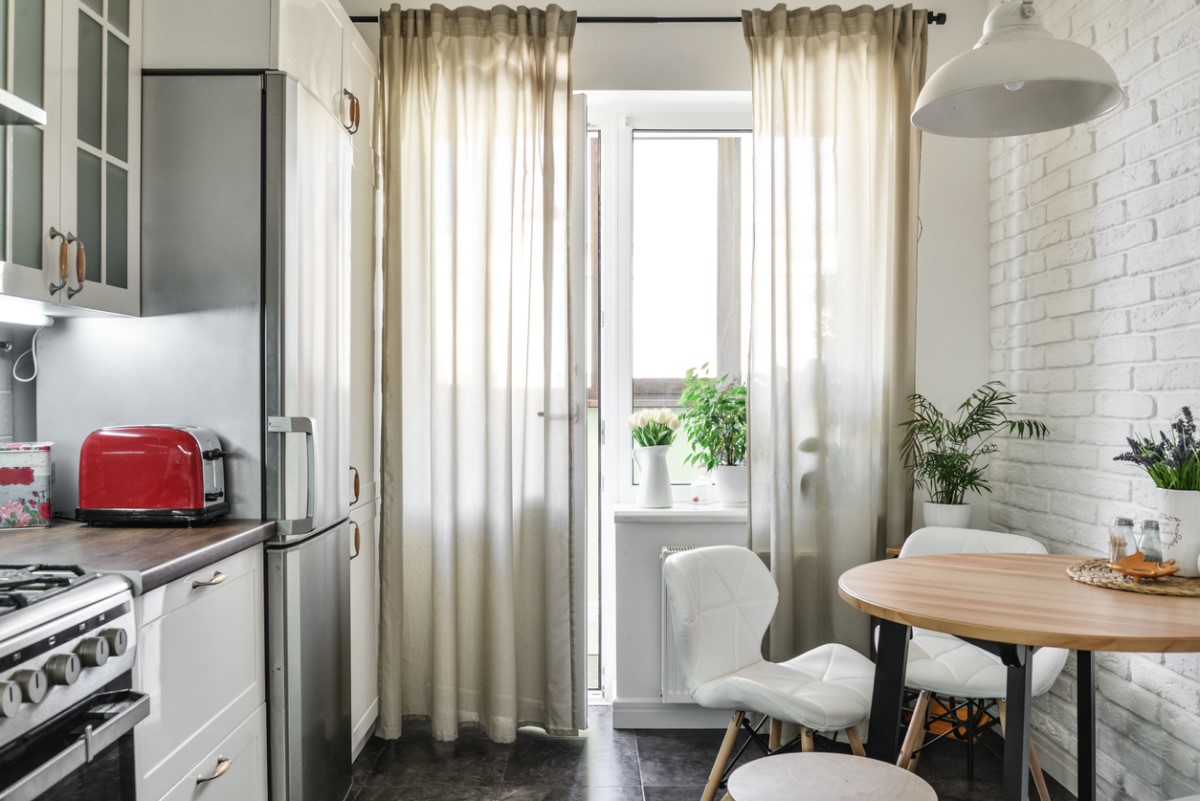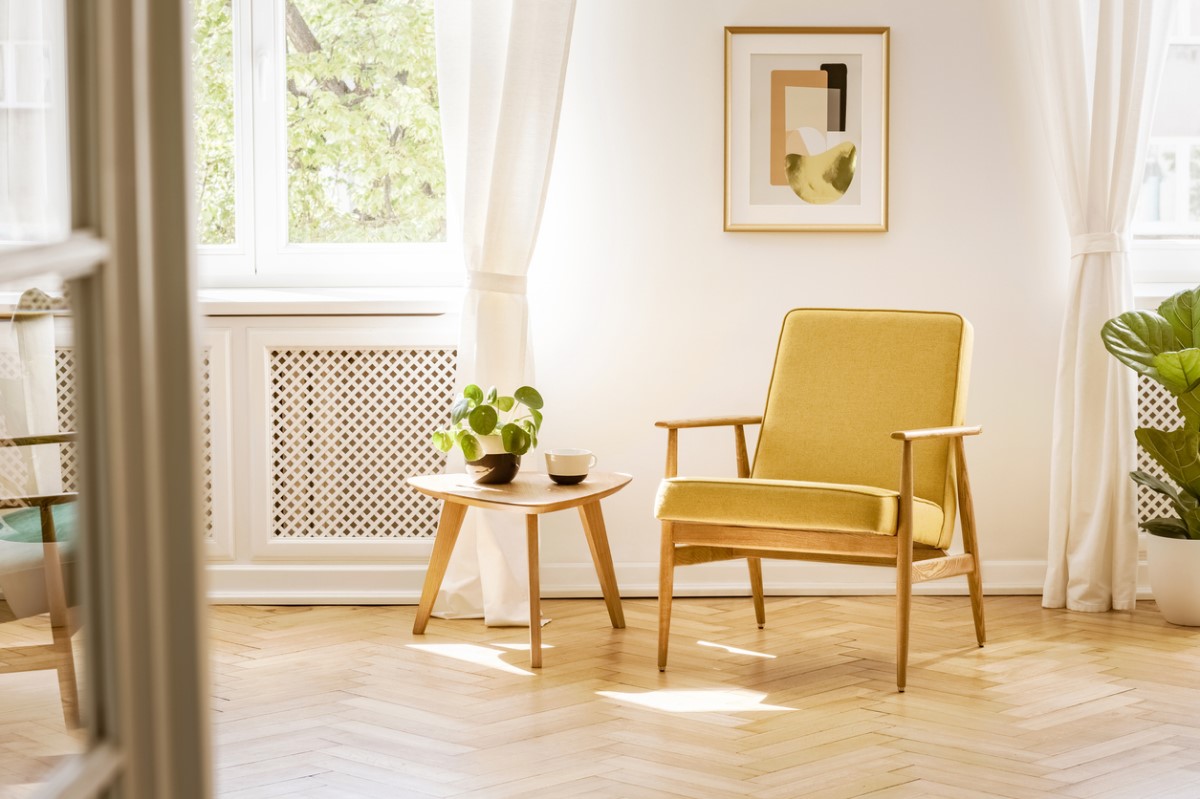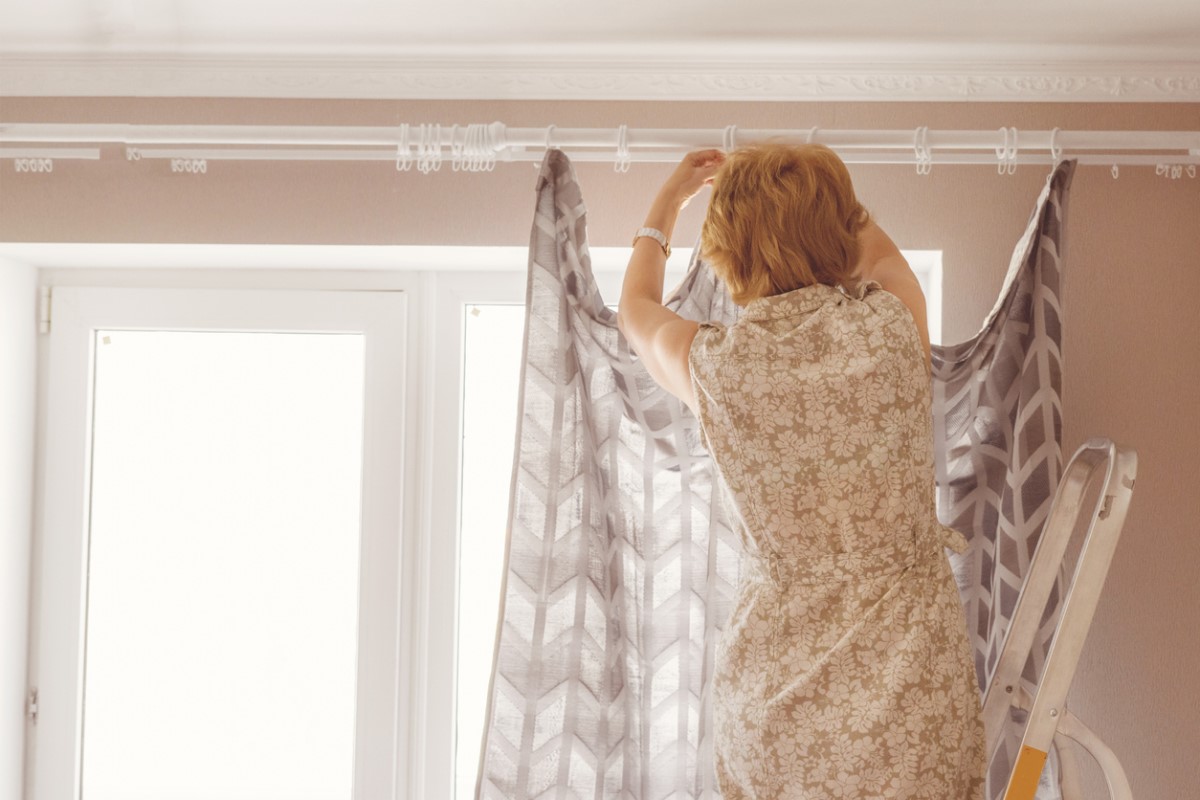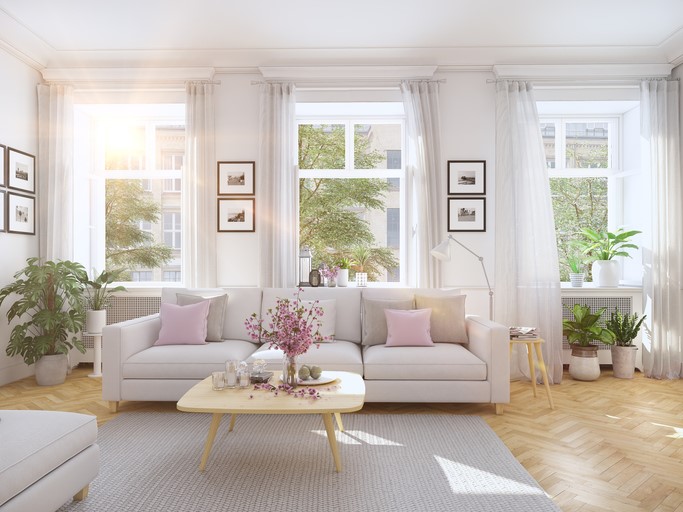We may earn revenue from the products available on this page and participate in affiliate programs. Learn More ›
The right drapes or curtains can add a lot to your enjoyment of an interior space, as well as the room’s decor. Along with providing privacy and control over the light that comes in, fabric window treatments let you add a hefty dose of color, texture, and interest. Yet choosing and hanging curtains can be challenging unless you understand a few simple guidelines. Here are six decorator secrets for making your windows wow, no professional help required.
1. What’s the difference between drapes, draperies, and curtains anyway?
While the three terms are often used interchangeably, they each have specific meaning.
- Technically, curtains are made of lightweight fabric (think voile, cotton, gauze, lace) and lack a lining. They normally remain in place over the window with no opening and closing mechanism. Curtains offer some privacy while still letting light into the room, and are a popular choice for bathrooms and kitchens. While not quite as popular as they once were, café curtains, which cover just the bottom half of the window, are still often used on windows over a kitchen sink.
- Draperies, traditional window treatments for living rooms and bedrooms, are made of heavier fabrics such as velvet or silk and are often lined. They’re typically opened and closed to let in light or block it out, using a corded pull system in the curtain rod. Draperies provide full privacy—an especially important consideration in the bedroom. So-called “blackout curtains” have very heavy linings that block out all light, important if you or your partner need to sleep during the day due to work hours or illness.
- While “drape” is a verb, not a noun, that refers to the way fabric hangs, whether in a window covering or clothing, “drapes” has become a synonym for draperies.
RELATED: Blinds vs. Curtains: Which Are Right for Your Home?

2. How high should you hang curtain rods?
While the style of yesteryear called for installing curtain rods right above the top of the window, today decorators prefer to go a little—or sometimes a lot—higher. Hanging window coverings higher than the actual windows creates an illusion of larger windows and higher ceilings, both of which fool the eye into thinking the room is more spacious.
As a general rule, installing the curtain rod four to six inches above the top of the window is the best placement for most rooms, assuming an average-height ceiling and windows that aren’t very large or small in proportion to the overall room size. Variations to this guideline include:
- If the top of the window is 6 to 12 inches from the ceiling, many designers suggest hanging the curtain rod halfway between the top of the window and the ceiling. This height opens up the space visually while keeping a balanced appearance.
- If the top of the window is more than 12 inches from the ceiling, or the ceilings are high or vaulted, you can hang the rod even higher. Don’t go higher than 8 inches above the window, however, as doing so can cross the line from stylish to silly.
- If the room has very tall windows that reach right up to the ceiling, the curtain rod should actually be hung at the ceiling line. You’ll gain a clean and contemporary feel to the space.

3. How far down should curtains hang?
Look at photos of rooms from several decades ago, and you’ll likely see curtains that stop a foot or more above the floor. Today’s designers prefer window hangings that come close to—or even touch—the floor.
- If you’ll be opening and closing the drapes regularly, the best length is within one-half inch of the floor. That creates a long, clean line of fabric, but still lets you easily maneuver the drapes.
- If hanging draperies that are decorative only, and won’t be opened or closed regularly, you can go even longer. Many decorators like hanging curtains long enough to puddle slightly on the floor, which gives a formal, dramatic appearance to the room. An extra three inches or so of fabric creates a very stylish puddle, while four to six extra inches of fabric creates a glamorous and dramatic puddle. Keep in mind that puddled fabric tends to collect a lot of dust and pet hair, and might also entice a curious pet or toddler to tug or play with the window treatments.
- Keep your curtains shorter when there’s an obstruction underneath the window. If there’s a radiator, a couch, or other large piece of furniture directly in front of the window, or the window has an exceptionally deep sill, then your curtains should hang down to right above the obstruction, not to the floor.
Before buying drapes, determine your desired length. First, measure the height of the window from top to bottom. Now, decide on how many inches above the window you’ll install the curtain rod. Next, measure the distance from the bottom of the window to the floor. Finally, if you want your drapes to puddle, decide on how “deep” of a puddle. Add all of those numbers together. Their sum is the length of curtains you need to buy.
4. How wide should curtains be?
As a general rule of thumb, curtains that are attractively full and drape gracefully around the window require two to two-and-a-half times as much fabric as the width of the window itself. So, for example, if your windows are 36 inches wide, you’d want a pair of drapery panels that measure between 72 and 90 inches wide. Note that most draperies and curtains are sold in sets of two panels, allowing you to open the window treatments from the middle. So in our example, the 72 to 90 inches is the total width of both panels, not each separate panel.

5. What’s the right curtain rod?
The rod that screws into the wall above your window is also key to the process when hanging curtains. Formal, pleated styles of draperies generally have a hidden pocket in the upper backside of the fabric that conceals the curtain rod, but the rod is left exposed with casual or contemporary non-pleated window treatments that hang from grommets, tabs, or loops.
- For pleated styles, rods are typically one piece and not at all decorative: the ends of the rod curve to meet the wall, while the body of the rod stands a few inches out from the wall. Small clips or hooks attach pleated curtains to the rod. A pull-cord at one end of the rod allows you to open and close the drapes by sliding the clips along a track concealed inside the rod.
- For contemporary styles, where curtain rods are visible, they come in a wide range of attractive styles and materials, including wood and metal. These rods are held in place by brackets that screw to the wall and don’t have a pulling mechanism, clips, or an inner track, as you simply slide the fabric along the rod manually to open or close the draperies.
Most often, curtain rods are hung outside the window frames in bedrooms and living rooms and generally extend a few inches beyond the actual window width. Current style guidelines call for curtain rods that are three to six inches wider than the window on each side. For example, a 36-inch wide window looks best with a curtain rod that’s 42 to 48 inches long. Large windows can go even wider, but don’t use a curtain rod that is more than one-third longer than the width of your window.
Example: On a 60-inch window, your curtain rod could extend as much as 10 inches on each side. (60 inches divided by three equals 20 inches. Divide the 20 inches in half, and you get 10 inches on each side of the window.)
Small windows in bathrooms and kitchens, however, usually look best with a rod hung inside the frame, as do any windows with very ornate frames or trim.
6. How do you choose curtain color?
While neutrals are easy because they complement any scheme, don’t overlook the power of colorful curtains to add impact to a room. Whether you like them bright, pastel, jewel-tone, or dark, curtains that strongly contrast with the walls are an easy and effective way to up the drama. In a bedroom or other space where you’d like to block light, select from the darker spectrum of options. Whatever color you do choose, keep the look cohesive by picking a hue already present in a throw pillow, rug, or piece of artwork in the room.

